Choosing the right fire control panel is essential for any building, as it can mean the difference between life and death in the event of a fire. The fire control panel is the central component of the fire alarm system and it is responsible for detecting and responding to fires.
There are a number of factors to consider when choosing a fire control panel, including the size and complexity of the building, the fire risk and the budget. However, some of the most important factors to consider are the type of panel, the features it offers and the reputation of the manufacturer.
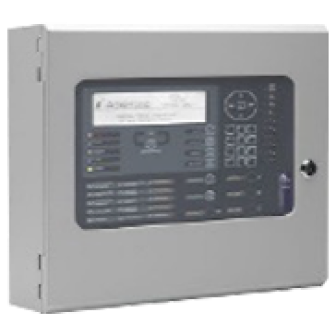
Addressable fire alarm panels are more expensive and complex than conventional panels, but they offer a number of advantages. They can identify the specific device that triggered the alarm, which can save time and help firefighters locate the fire more quickly. These panels also offer more flexibility than conventional panels. For example, addressable fire alarm panels can be programmed to perform different actions depending on the location of the fire.
Uses and applications: High-rise buildings | Hospitals and healthcare facilities | Industrial facilities |Educational institutions | Goverment buildings | Military bases
Shop Now
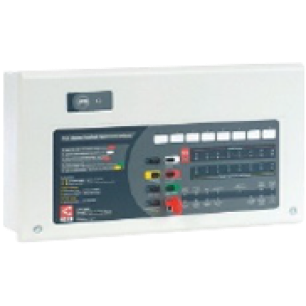
Conventional fire alarm panels are the oldest and most common type of fire alarm panel. They are also the least expensive and easiest to install. These panels work by dividing the building into zones, each of which is connected to the panel by a circuit. If a fire alarm device in a zone is triggered, the panel will sound an alarm for that zone. However, conventional fire alarm panels cannot identify which specific device in the zone triggered the alarm.
Uses and applications: Homes |Offices | Small retail stores | Restaurants | Schools | Churches | Warehouses
Shop Now
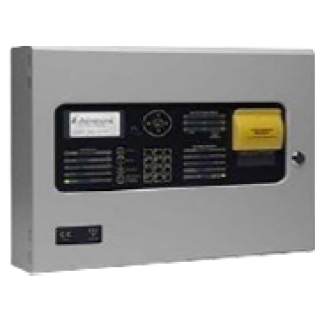
Extinguishing panels are used to control fire extinguishing systems, such as sprinklers and gas suppressors. They work by monitoring the fire alarm system and activating the appropriate extinguishing system when a fire is detected. Extinguishing panels can be either conventional or addressable.
Uses and applications: Commercial buildings | Industrial facilities | High-rise buildings | Healthcare facilities | Schools and universities
Shop Now
Wireless fire control panel modules, integrated into fire panels, offer a revolutionary approach to fire safety. Their key advantage lies in eliminating the need for wired connections, significantly reducing installation time and costs. This wireless technology enhances scalability, allowing for easy system expansion. With improved reliability and minimal maintenance, these modules contribute to a more agile and responsive fire protection infrastructure. The quick response times and simplified installation make wireless fire control panel modules a crucial component, ensuring heightened safety and security for buildings and occupants.
Fire panels receive data from sensors and detector devices through two main types of connectivity: wired and wireless.
Wired sensor connectivity is the traditional method of connecting sensors. It involves cables connecting the sensors and detector devices to the central system. This type of connectivity is reliable and secure, but it can be expensive and difficult to install, especially in large or complex buildings.
Wireless sensor connectivity is a newer method of connecting sensors. It involves wireless technologies, such as radio frequency (RF) and Wi-Fi, to connect the sensors to the central system. Wireless sensor connectivity is less expensive and easier to install than wired.
Fire panel zoning is the process of dividing a building into different areas, each of which is monitored by a separate zone on the fire panel. This allows firefighters to identify and respond to the location of a fire quickly.
Each panel has a maximum number of zones it can serve. Zoning is typically done based on the size and layout of the building, as well as the fire hazards present. For example, a large office building might be divided into zones based on each floor, while a small retail store might only have one zone.
The number of relays that a fire panel can support depends on the type of fire panel. Conventional fire panels can support a variety of relays, including Form A (normally open), Form B (normally closed), and Form C (double throw). Addressable fire panels typically support fewer relays than conventional fire panels, but they can support more complex relay functions.
The number of relays that a fire panel can support also depends on the fire alarm system design. For example, a fire alarm system with a large number of zones will require more relays than a fire alarm system with a small number of zones.
ome examples of the number of relays that different types of fire panels can support:
Conventional fire panels: 16 to 128 relays
Addressable fire panels: 4 to 32 relays
The number of sounder circuits required for a fire alarm system depends on the size and complexity of the building. For example, a small office building may only require one sounder circuit, while a large hospital may require multiple sounder circuits.
When designing a fire alarm system, it is important to consider the number of sounder circuits required and to choose a fire panel that can support the required number of circuits. It is also important to ensure that the sounder circuits are properly wired and that the sounders are located where all building occupants will hear them.
Conventional fire panels typically support 1-4 sounder circuits, while addressable fire panels can support 1-16 sounder circuits.
Remote fire panel monitoring solutions enable real-time surveillance and control of fire alarm systems from a centralised location. These advanced systems leverage technology to provide instant notifications, allowing monitoring personnel to respond promptly to potential threats. These solutions offer heightened situational awareness by integrating sensors and communication tools, facilitating early detection and prevention of fire incidents. The ability to remotely access and manage fire panels enhances efficiency, reduces response times, and minimises the risk of false alarms. This technology is invaluable for large-scale facilities, ensuring a proactive approach to fire safety by enabling continuous monitoring and swift intervention regardless of geographical distance.
Read our latest articles and explore additional solutions and guides for installers and dealers
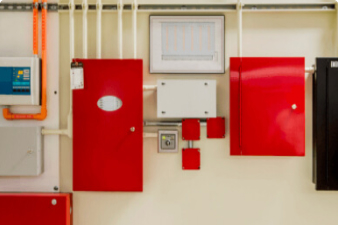
Ensuring that you install the right size, certified power backup batteries in addressable and conventional fire alarm panels
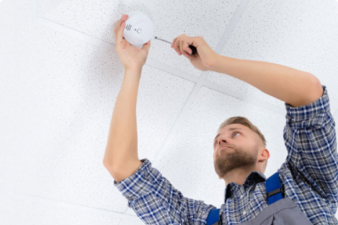
Learn everything you need to know about carbon monoxide detectors, including common features where they should be installed and more, in this simple guide.

Discover cutting-edge fire tech with Apollo and ADI Global. Join our webinar to explore REACH wireless fire detection
ADI offers you a number of value-added services to help with all of your AV installation projects.
ADI's site survey experts will assist you on-site to understand your customer’s needs, assess site feasibility and achieve the best solution in terms of design and budget.
Let our product specialists demonstrate the latest technology, product features and customer benefits either face-to-face or in an interactive environment.
Sign up for a webinar, attend a branch event or stop by an ADI Expo near you to gain industry knowledge and learn about new products and solutions.
We aim to provide effective problem resolution while reducing time spent on-site as much as possible. Our experts can troubleshoot issues virtually or on-site.
ADI’s system design service can help with any project, designing a system that is specifically fit for your project requirements — at the best possible cost.